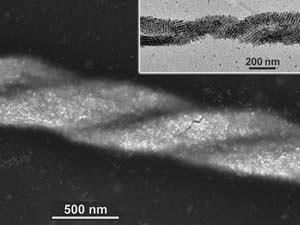Tiny cubes of magnetite form superstructures under a magnetic field

Magnetic nanocubes self-assemble into spirals was first published by Chemistry World.
Tiny cubes of magnetite form superstructures under a magnetic field

Magnetic nanocubes self-assemble into spirals was first published by Chemistry World.
No comments yet